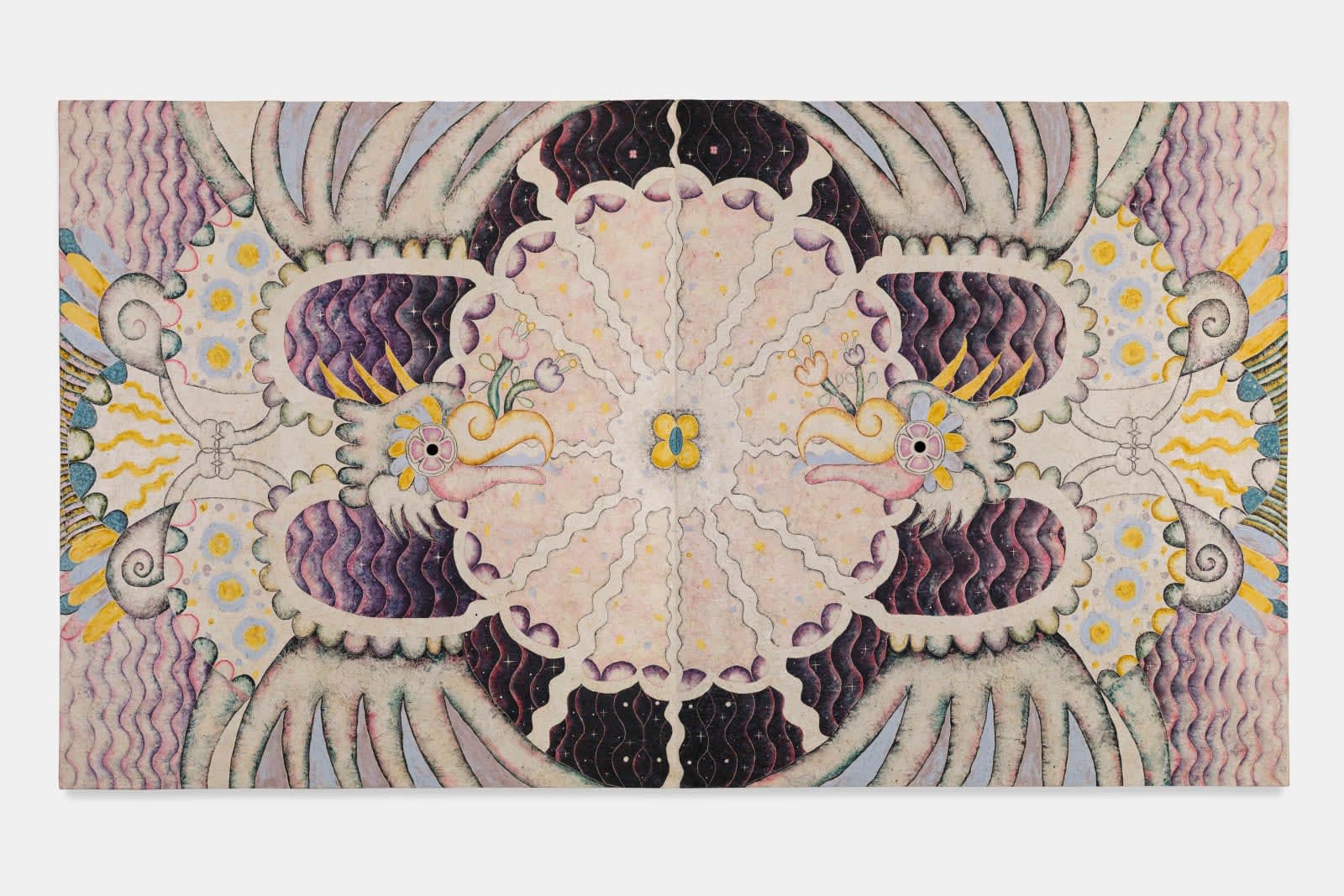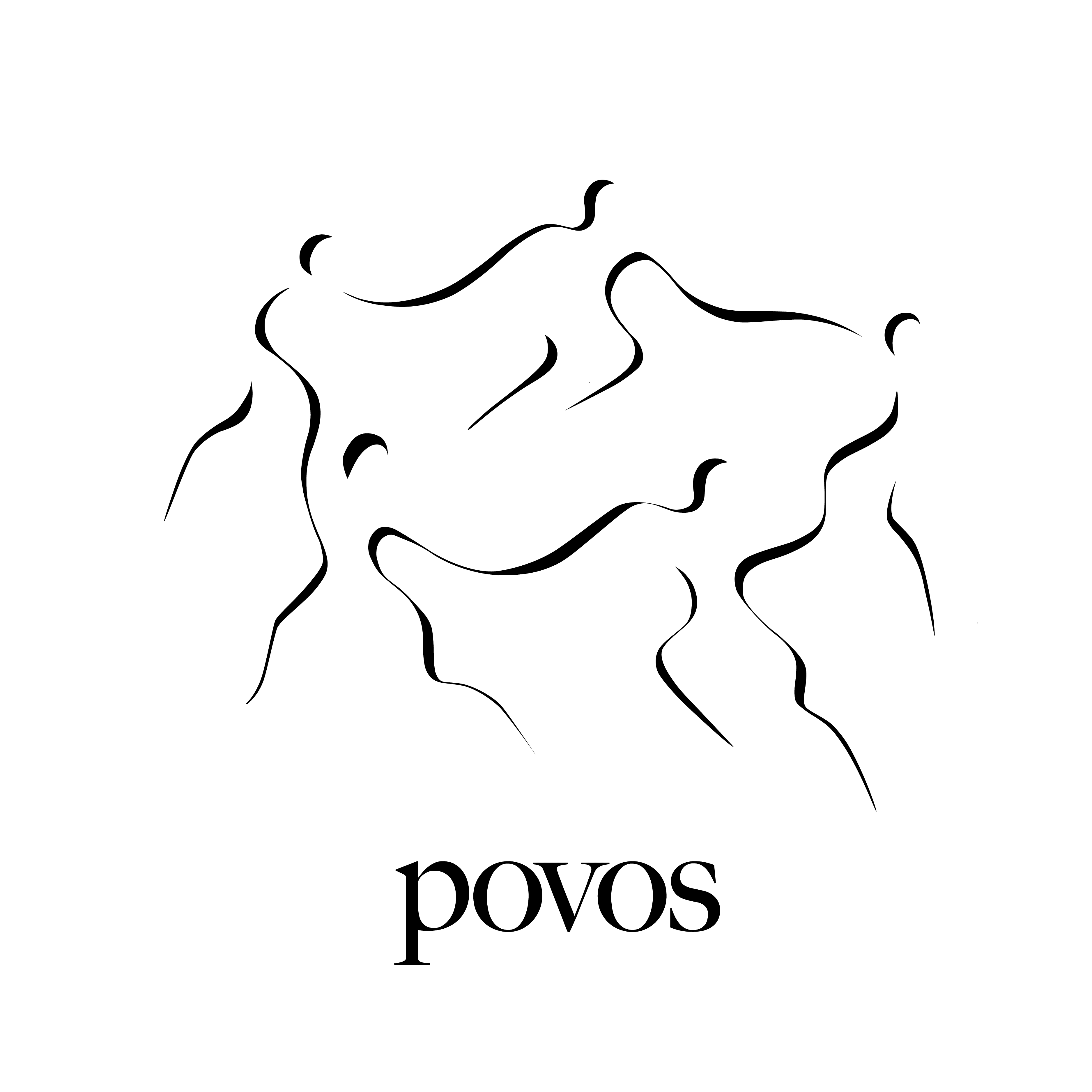 Omar Mendoza, “Noche obsidiana—Obsidian Night,” 2025, Mayan blue, Mayan green, indigo blue, Brazilian wood, Mexican honeysuckle, jonote, zacatlaxcalli, kina, charcoal, turmeric, beet and beeswax on handmade cotton surface, 78 3/4″ × 141 3/4″/Photo: Povos
Omar Mendoza, “Noche obsidiana—Obsidian Night,” 2025, Mayan blue, Mayan green, indigo blue, Brazilian wood, Mexican honeysuckle, jonote, zacatlaxcalli, kina, charcoal, turmeric, beet and beeswax on handmade cotton surface, 78 3/4″ × 141 3/4″/Photo: Povos
“Painting becomes an act of reciprocity with the earth and its cycles.”—Victoria Rivers, curator of “Serpiente Solar—Noche Obsidiana”
Artists have long sought inspiration from the world of nature, whether it’s in the resplendent flowers of Vincent Van Gogh or the dynamism of the prehistoric Lascaux cave paintings. Omar Mendoza’s solo exhibition “Serpiente Solar—Noche Obsidiana” aspires to move beyond the earth/nature as inspiration, but as “distilled memory” where “everything is alive and in relationship: water, stone, plants, fire, night.”
Recently named 2026 Fountainhead Arts artist-in-residence, Mendoza aims to embody his work as that act of reciprocity, starting at the most fundamental part of any painting: the paint itself. In conversation with Mendoza, he explains that he began analyzing his relationship with paint and recognizing it was skin deep. He chose colors purely for their aesthetics. He decided he needed to establish a deeper relationship with his pigments and began learning about making pigments from plants and other elements around him and his grandparents’ village in Mexico.
Mendoza explains that it changed his relationship to pigments. For instance, he is more intentional when he uses colors. Before, he could go to the store to replenish a color that he could use indiscriminately, but now, making each color is an act of labor and time. A large collection of leaves will only result in a small amount of pigment.

Through this labor-intensive process, each pigment becomes a gift. The land provides the plants and minerals, which give their stalks and minerals to create the reds, blues and yellows for Mendoza’s work, while Mendoza dedicates his time and effort to make these raw materials into those colors. With that, he becomes both alchemist and painter. (There are even four jars of different colors on a shelf in the gallery to represent the creative process of pigment making.)
That alchemy is evident in his fourteen works in the show; each piece draws on Mesoamerican cosmologies of creation. It’s a joyful example that the message is the medium. He’s using the very elements in his tools to show the natural world and its underlying cosmologies. The pieces are meant to be portals of knowledge to relearn the human connection and relationship with the world.
One of the striking pieces is “Noche obsidiana—Obsidian Night” (2025) that depicts two eagles flying toward a yellow flower with the obsidian sky undulating like water beneath them. In Aztec mythology, eagles are associated with the sun. It feels like these two eagles are bringing forth the day, enfolding the night sky in their wings. The piece feels like controlled chaos, bringing space, air, earth and sea altogether.
In another piece, “Invocación—Invocation” (2025) features a snake curled through itself, but it’s not a snake eating their own tail. Instead, it also feels like another snake is emerging from the first, as if part of an act of creation, which resonates with the frequent association of serpents with fertility in Mesoamerican cultures.
“Omar Mendoza: Serpiente Solar—Noche Obsidiana” is on view at Povos Gallery, 1541 West Chicago, through November 15.


